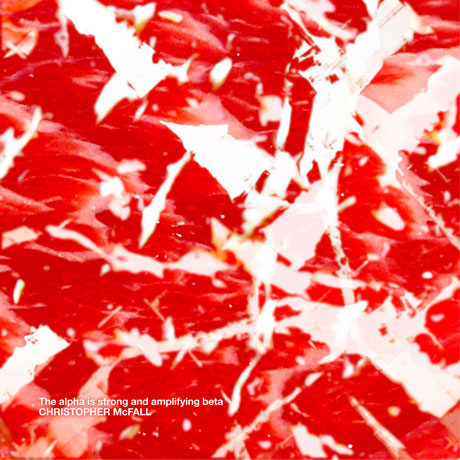The alpha is strong and amplifying beta. CHRISTOPHER McFALL
(Impulsive Habitat 2011)
“The world’s stock of audio recordings is estimated to be more than 50 Mh (million hours) of materials. None of these recordings are on permanent carriers.” – D. Schuller, “Preserving the Facts for the Future: Principles and Practices for the Transfer of Analog Audio Documents into the Digital Domain.” Journal of The Audio Engineering Society, 2001;49 (July) :618–621
There is an interesting relationship between audio recordings and the medium used to preserve them. As well as manipulating sound before it is recorded by means of playing techniques and effects etc. It can also be altered after the event. For example, in the case of vinyl records by such things as scratching and reversing the direction of spin. Oval’s Systemisch LP of 1996 used CDs with paint and adhesive tape on their surfaces to break up the signal and create a sound rich with glitches, judders and pops.
Physical interaction with captured audio is not new. Tape splicing was of course a method favoured by early electronic composers and purveyors of Musique Concrete. Whole blocks of information could be lifted and reordered with careful use of a scalpel and sticky tape. Now we do it on digital audio workstations without actually getting anywhere near the data itself, which is on a hard drive deep in the heart of our computers.
Christopher McFall has taken his original digital field recordings and re-recordered them onto hydrolyzed magnetic tape. That is tape which has been damaged by moisture. The water has caused the binder (the substance which holds the magnetic particles together) to break down, thus creating an unreliable surface. Physically cutting and splicing the decaying tapes into loops, McFall has then played them interlayering with each other to create these compositions. listening to the three tracks is like looking at the magnified surface of one of the tapes. Granular and unstable, toxic mists shift and coalesce. Decay and instability suffuse the sound.
It brings to mind rust or microscopic geological erosion. The origins of the field recordings that were put through this process of reconfiguration are not recognisable anymore, at least not to me. They have become a victim of unreversible forced entropy.
EST is a low drone at first, then interference bleaches out most of the detail, all the while scrapes and knocks take place beneath a murky fog. Towards the end what sounds like music struggles, but fails to emerge. Clustal is a dark, hollow scrape that gives way to unknown rattlings and other activity only to be overcome by impending hiss. Array, the final track, begins as an urgent rhythm that becomes embedded and finally subsumed by waves of clatter and dusty needle noise. This track splutters to an end as if the recording equipment has given up the ghost and gone to sleep forever.
Close to where I live is an English medieval church decorated with 15th century wall paintings depicting biblical scenes. As most of the population was illiterate and books were rare, these images were used to teach the scriptures. Virtually all churches up to the early 16th century had wall paintings. Few have survived because they were not protected. The tapes have been wiped. They were recordings that are now erased and cannot be retrieved.
Nothing is permanent, but some things are more permanent than others.
-Chris Whitehead


